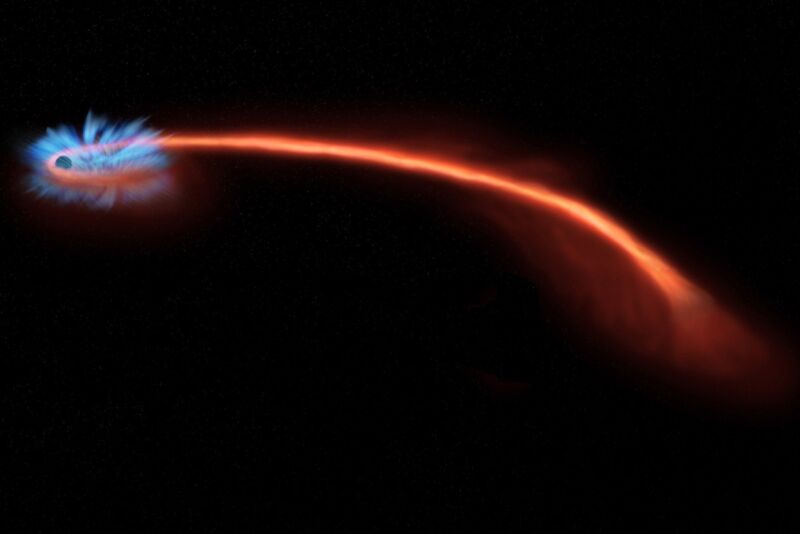-
 chevron_right
chevron_right
Polarized light reveals final fate of a star “spaghetified” by a black hole
news.movim.eu / ArsTechnica · Wednesday, 13 July, 2022 - 15:00 · 1 minute

Enlarge / If a star (red trail) wanders too close to a black hole (left), it can be shredded, or spaghettified, by the intense gravity. Some of the star’s matter swirls around the black hole, like water down a drain, emitting copious X-rays (blue). (credit: NASA/CXC/M. Weiss)
When astronomers first observed a star that was shredded, or “spaghetified,” after approaching too close to a massive black hole in 2019, they determined that much of the star’s matter was launched outward in a powerful wind from the optical light emitted from the blast. Now, astronomers from the University of California, Berkeley (UCB) have analyzed the polarization of that light to determine that the cloud was likely spherically symmetric, adding further evidence for the presence of that powerful wind.
“This is the first time anyone has deduced the shape of the gas cloud around a tidally spaghetiffied star,” said co-author Alex Filippenko , a UCB astronomer. The latest findings appeared in a recent paper published in the Monthly Notices of the Royal Astronomical Society.
As we've reported previously , an object that passes beyond the event horizon of a black hole—including light—is swallowed up and can't escape, although black holes are also messy eaters. That means that part of an object's matter is actually ejected out in a powerful jet. If that object is a star, the process of being shredded (or "spaghetified") by the powerful gravitational forces of a black hole occurs outside the event horizon, and part of the star's original mass is ejected violently outward. This can form a rotating ring of matter (aka an accretion disk ) around the black hole that emits powerful X-rays and visible light. The jets are one way astronomers can indirectly infer the presence of a black hole.
